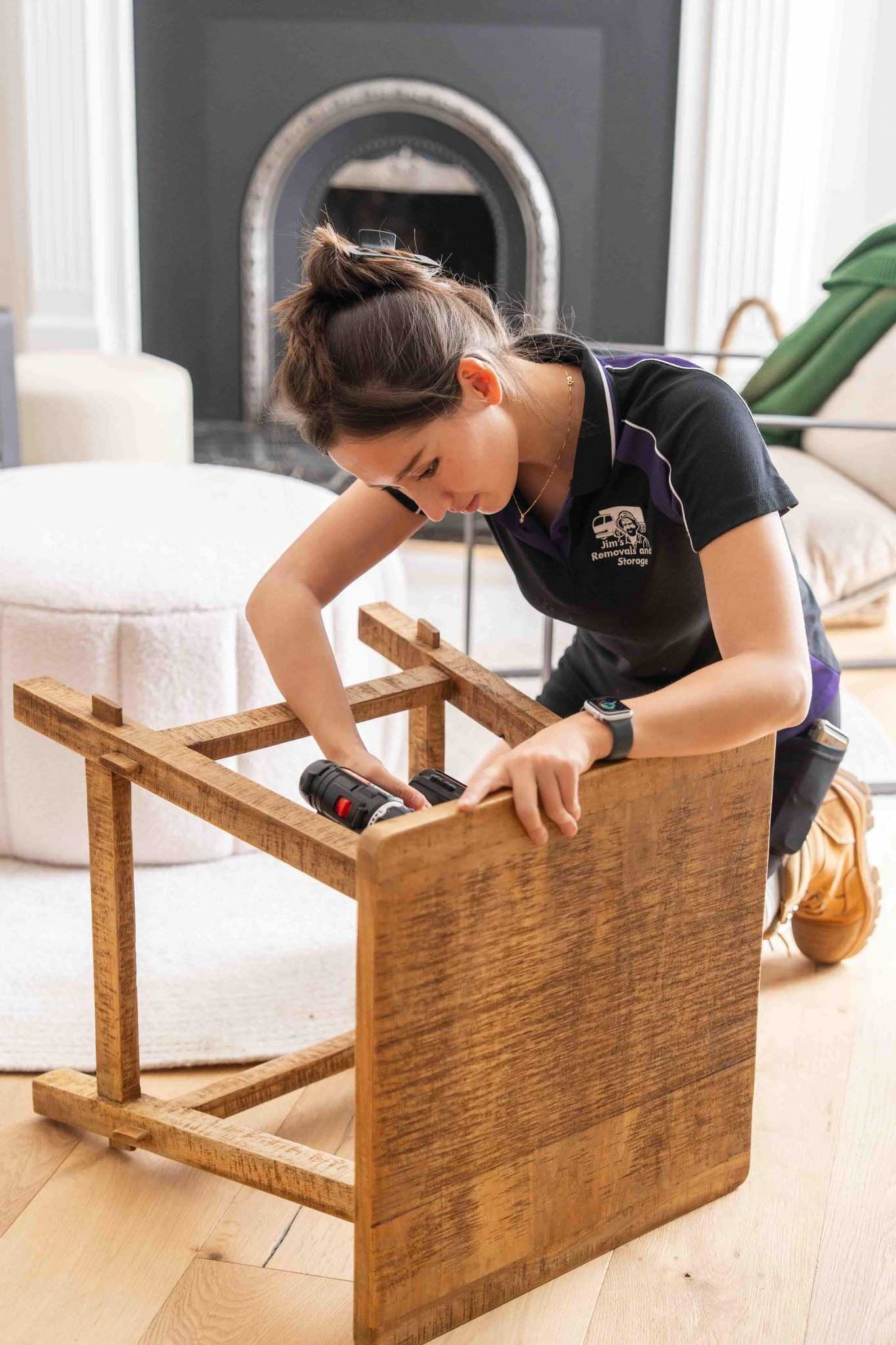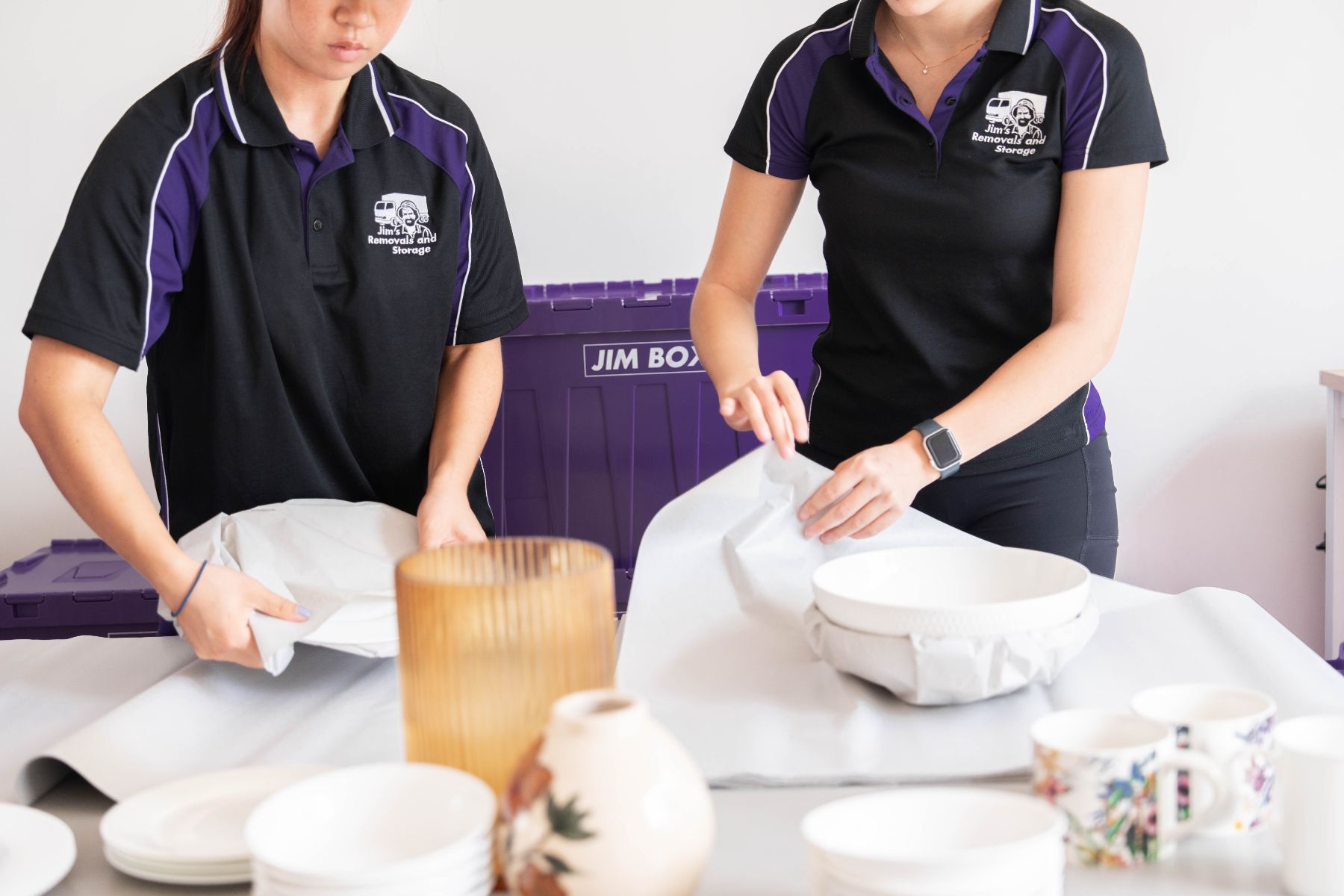Furniture Assembly and Disassembly Tips for Moving
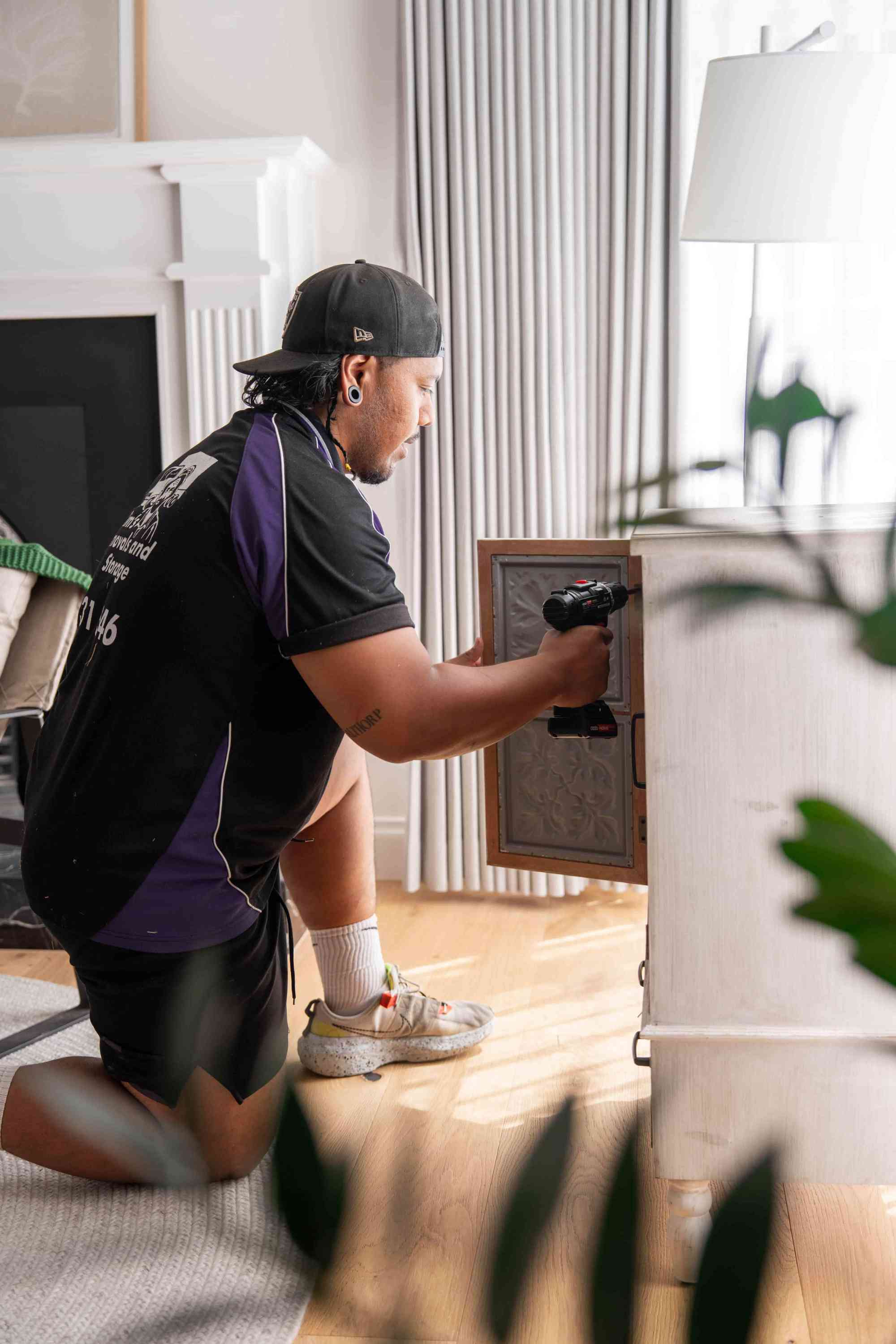
If you don’t move often, you may be scratching your head, wondering how you’ll get that large l-shaped desk out through your narrow doors. Sometimes, you’ve lived in a place so long, you don’t remember how you moved the items in in the first place! Knowing how and when to disassemble furniture is not only a necessary step to moving, but it also can prevent damage, save time and keep your moving day running smoothly.
Why Should You Disassemble Furniture Before Moving?
Not every piece needs to come apart, but for bulky or fragile items, disassembly makes a world of difference. Here’s a few reasons why:
- Prevents damage: Smaller pieces = fewer tight squeezes through doorways and stairwells.
- Saves space: Flat-packed furniture fits better in the truck, giving you more space for boxes and other items that would take several car loads to move.
- Reduces weight: Easier to lift and move in smaller sections, saving you (or your movers) backs.
If you’re unsure if an item will be tricky to move, disassembling is always the right call. For a second opinion, feel free to ask your mover to inspect the access, either through an in-person visit or some photos. Generally, an experienced removalist should be able to tell you if an item is worth disassembling or not.
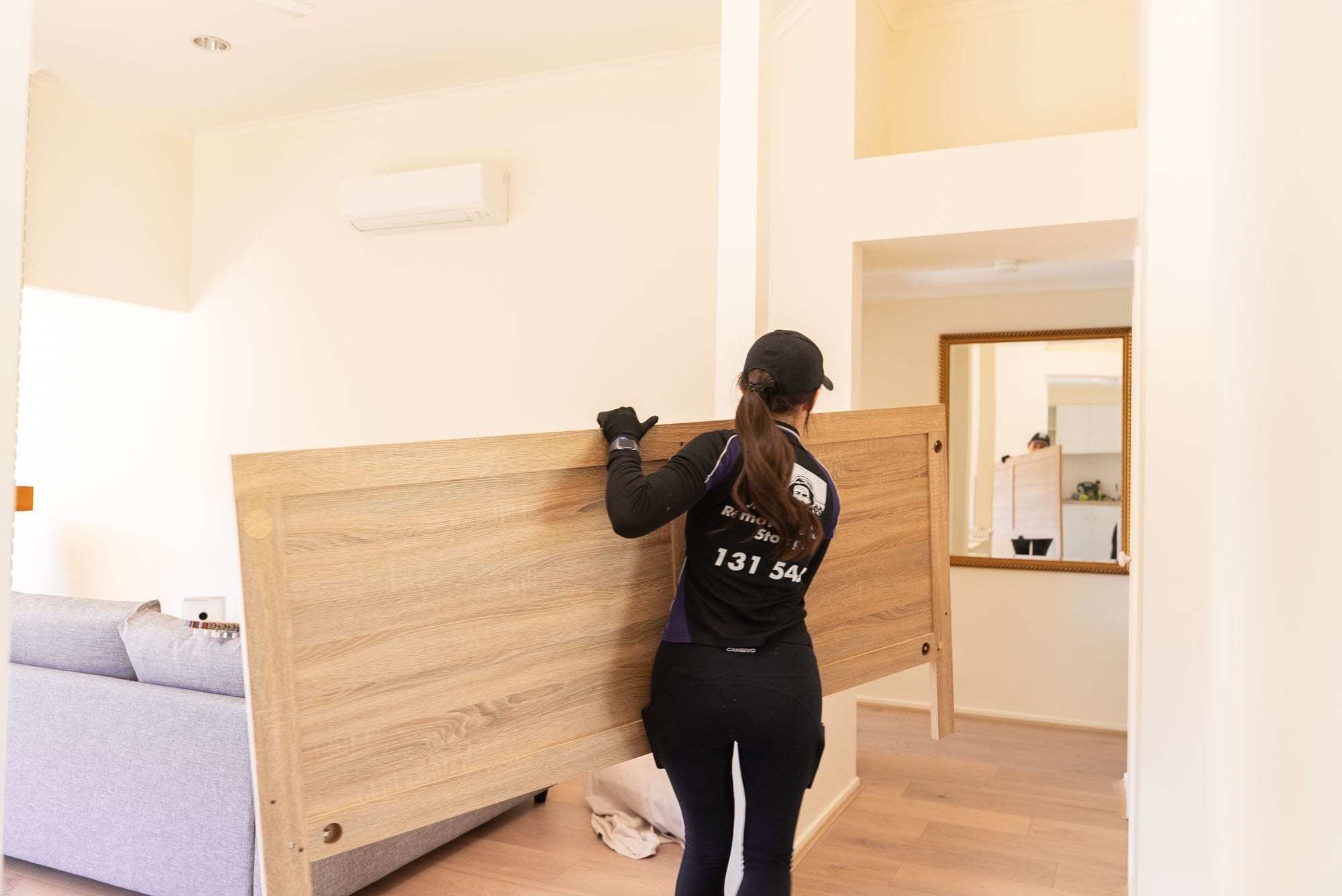
What Furniture Should You Take Apart Before Moving?
You don’t need to pull everything to pieces, but some items benefit from it:
- Beds and bed frames – for double beds and larger, always disassemble; they’re too bulky to move otherwise. Single beds can often be left in one piece, but will take up more space in the truck if they aren’t disassembled.
- Dining tables – remove legs or extensions. This is especially beneficial for heavier dining tables, and may sometimes mean the difference between needing 2 or 3 people to move a table.
- Modular couches – separate sections into smaller, more manageable pieces.
- Desks and bookshelves – take off detachable panels and shelves. This can shave time off moving, and also ensure the shelves won’t shift during transit.
How Do You Disassemble Furniture Safely?
Follow these furniture disassembly tips to keep your parts organised and damage-free:
- Take photos before you start. Trust us, you’ll feel confident as you’re disassembling, but 2 beds, a desk and a sleep later, you’ll be glad to have those photos in your phone!
- Use labelled bags for screws, bolts, and small fittings. Tape the bag to the furniture piece so you’re not sifting through a toolbox to find the right screws.
- Wrap sharp edges and corners with bubble wrap or moving blankets.
- Keep tools handy – Allen keys, screwdrivers, and a small spanner set cover most furniture.
One couple moving from Croydon to Ringwood disassembled their bed with no issues. However, once they’d moved to the new place, they realised they had no idea how to put it back together again. Luckily, our movers at Jim’s Removals were ready with a toolkit and armed with experience of that exact bed model. We were able to set the bed up in 10 minutes – which was a quarter of the time it took them to disassemble the bed!
How Do You Reassemble Furniture After Moving?
If you did your own disassembly, reassembly is generally more straightforward than disassembly, but a good plan still helps. Some tips are:
- Reassemble large, essential items first – like beds and dining tables. You may be tempted to start with the easy stuff, but you’ll regret it when it’s 10 o’clock at night and you’re sleeping on the floor.
- Follow your reference photos or manuals very carefully – you might think common sense and intuition will guide you through, but even a small mixup like facing a board upside down can lead to a lot of wasted time.
- Don’t overtighten screws, as furniture can warp after transport. Not to mention, the rougher you are with your furniture this time, the more difficult it will be to disassemble and reassemble in future.
If you’re short on time, many removalists (including our team) can help reassemble everything for you before they leave.
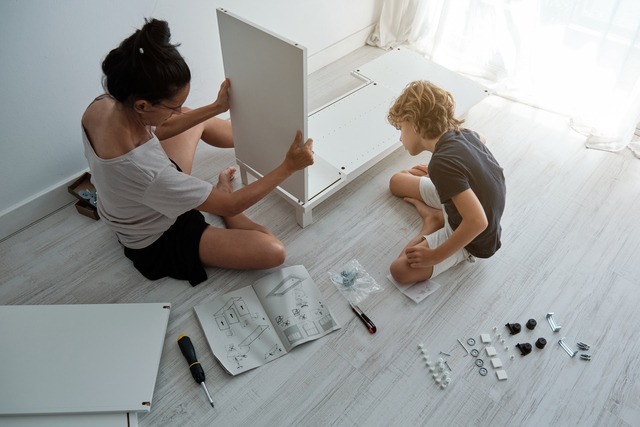
What Tools and Materials Should You Have Ready?
Necessary:
- Allen keys
- Screwdrivers (Phillips and flathead)
- Zip-lock bags or small containers for hardware
Not necessary but preferred:
- Adjustable spanner
- Painter’s tape and a marker for labelling
- Bubble wrap or blankets for protection

Should You Hire Professionals for Furniture Disassembly?
If your move involves heavy, complex, or antique furniture, professional help is worth it. Or, if you’re short on time and would prefer a professional to complete the job in a fraction of the time, removalist disassembly may also be the way to go. At Jim’s Removals, our movers are trained to:
- Disassemble and reassemble beds, tables, and shelving quickly
- Handle fragile or vintage items with care
- Use protective equipment to prevent wall or floor damage
- Load and secure pieces safely for transport
We’ve handled everything from flat-pack wardrobes to custom-built dining tables, and our customers love how much smoother it makes their move.
Final Thoughts: Make Furniture Moving Stress-Free
Taking the time to disassemble your furniture properly makes moving faster, safer, and far less stressful. Whether it’s a local move or an interstate relocation, good preparation and the right packing techniques keep your furniture protected from start to finish.
Get a free moving quote today and let Jim’s Removals help with every part of your move - from disassembling the first bed to putting the pillow back on at your new home.
